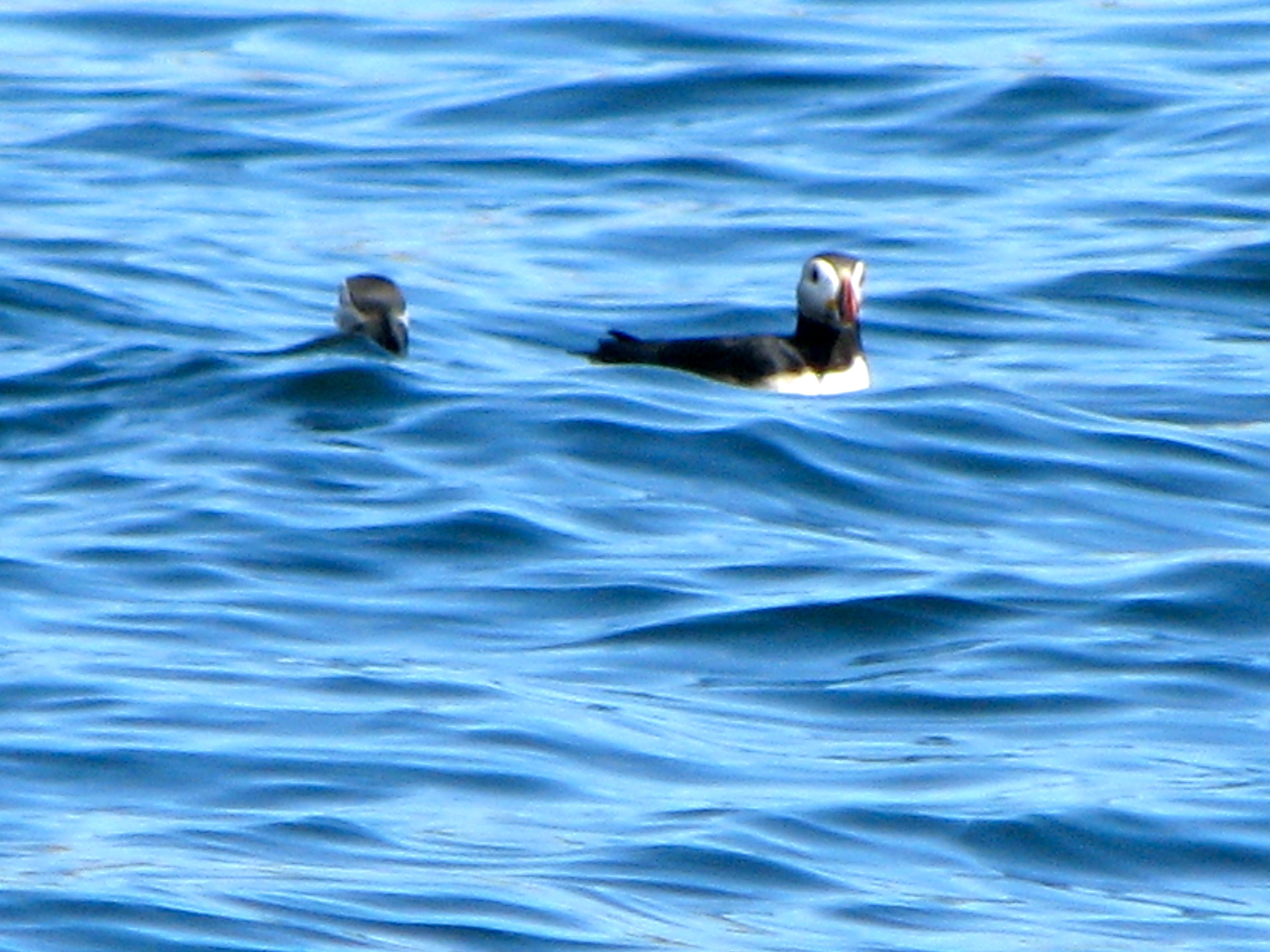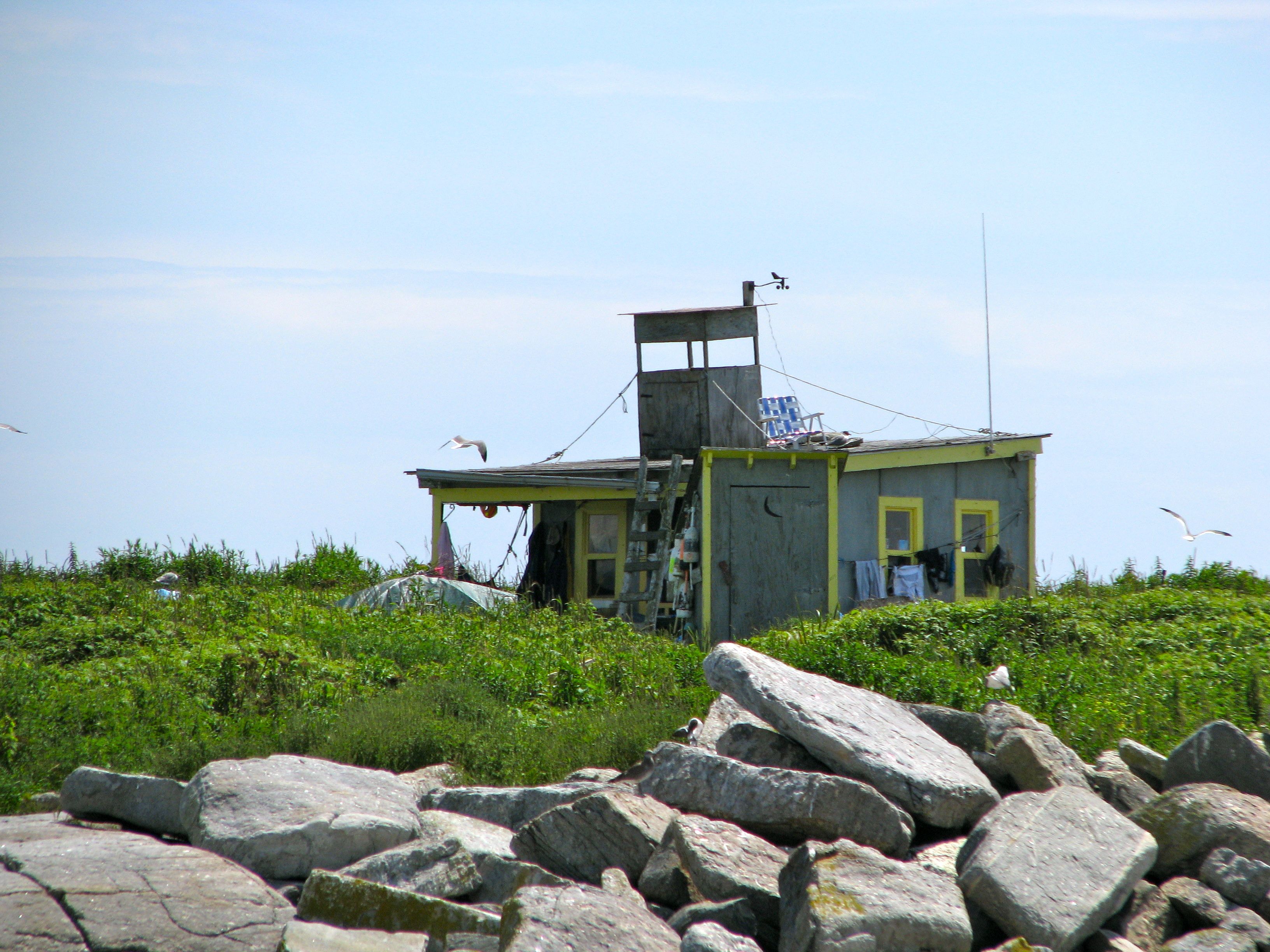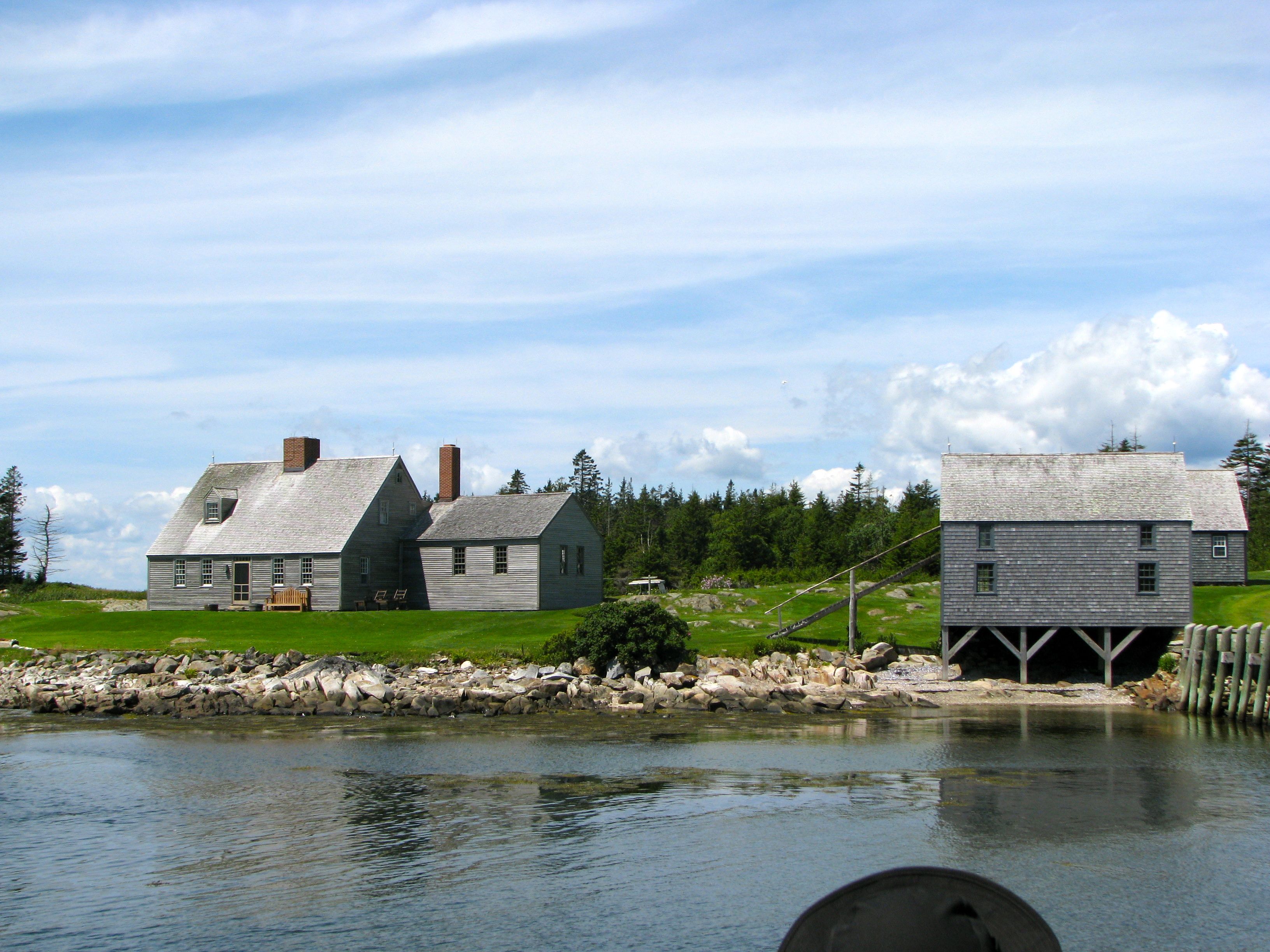Muscongus Bay, Knox Co., Maine (August 2009)

We left out of Port Clyde on an afternoon excursion to see an Atlantic Puffin colony. They live on nearby Eastern Egg Rock, a 7-acre island on the outer edge of Muscongus Bay (map). Puffins disappeared from the Eastern Coast of the United States for a long time. They had been wiped out both by human activities such as egging and hunting, as well as by displacement from other bird species. However, scientists reintroduced them in 1973. Eastern Egg Rock became the initial prototype for the restoration of all subsequent seabird colonies.
We’d found out about the colony after visiting the National Audubon Society’s Puffin Project Visitor Center in downtown Rockland, Maine. The kids loved the antics of those little birds and they wanted to see them in person.
Characteristics

Puffins are a type of Auk, and the Atlantic Puffin is one of three species. They are a pelagic bird, meaning they live on the open sea except to raise their young. Puffins breed in colonies along rugged coastlines or on rocky islands. There they burrow into the soil or crawling into crevices.
Atlantic Puffins aren’t found everywhere around the Atlantic as their name might imply. Rather, they stick primarily to the North Atlantic, on the European coast down to northern France, across the British Isles, Iceland and Greenland, down along Atlantic Canada, and finally to the restored colonies of Maine of the eastern coast of the United States.
With their beak they almost resemble a parrot, and with their body shape perhaps a penguin. However, they are not related to either of these species. They flap their stubby wings with great speed as they shoot like a rocket from the open sea to their perch on the islet. They provide quite an entertaining show.
Researchers

The story of the Atlantic Puffin restoration in Maine is remarkable. Scientists, university students and volunteers live on Eastern Egg Rock. They keep their eye out for the Puffins and making sure that the colony remains intact. So far they have been quite successful. The colony has grown to more than 100 nesting pairs.
Imagine living in this shack on a tiny speck of rock, day-after-day for two or three weeks at a time. However there’s no better seat in the house for a bird lover. This helps not only the Puffins but many other species that occupy Eastern Egg Rock including terns, gulls, and guillemots. Many of them rare and endangered themselves.
Wyeth Compound

This photo doesn’t relate to the puffins but it’s interesting nonetheless. The cruise passes the Wyeth Compound located on Benner Island (map) leaving Port Clyde and heading towards the colony on Eastern Egg Rock. The painter Andrew Wyeth lived here each summer until he passed away. His wife Betsy James Wyeth still lived there, several miles off the coast, as of the time of our trip.

Leave a Reply